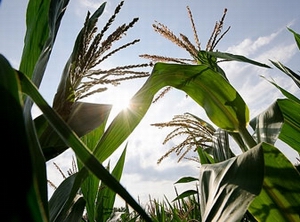 Corn conditions shifted minimally this week, and both corn and soybeans are still faring significantly better than last year.
Corn conditions shifted minimally this week, and both corn and soybeans are still faring significantly better than last year.In the top 18 states, 66 percent of the corn is reported in "good" or "excellent" condition -- up significantly from the percentage of corn (31 percent) in a similar condition at this same time last year.
This week’s “Crop Progress” report shows that 9 percent of the nation’s corn is in poor or very poor condition, up slightly from 8 percent last week.
Four states, including some of the nation’s biggest corn-producing states, reported high percentages of struggling corn:
| Percent of corn in poor or worse condition | |||
| This week | Last week | Last year | |
| ---percentage--- | |||
| Colorado | 24 | 20 | 38 |
| Iowa | 13 | 12 | 27 |
| Kansas | 22 | 14 | 51 |
| Texas | 12 | 10 | 11 |
As the chart above shows, Texas is the only state to see conditions on-par with 2012’s report.
The weekly “Ag in Drought” report shows that drought plays a role for the declining corn conditions in Colorado, Texas and Kansas.
Thanks to delaying planting, corn silking is currently at 16 percent, more than double last week’s report but still well-behind the five-year average of 35 percent.
Soybean conditions are similar to that of corn with 8 percent reported in poor to very poor condition. More than quarter of the soybeans has bloomed.
There is some good news on the horizon for farmers – updated weather forecasts have eased concerns over potential crop damages.
"We are looking at less sinister conditions across the United States to what the market was expecting a week or so ago... this has pushed prices lower," Luke Mathews, commodities strategist at the Commonwealth Bank of Australia said.
As a result, new-crop corn prices fell to a one-week low on Monday, pulling wheat and soybeans down in the wake of the corn markets.





